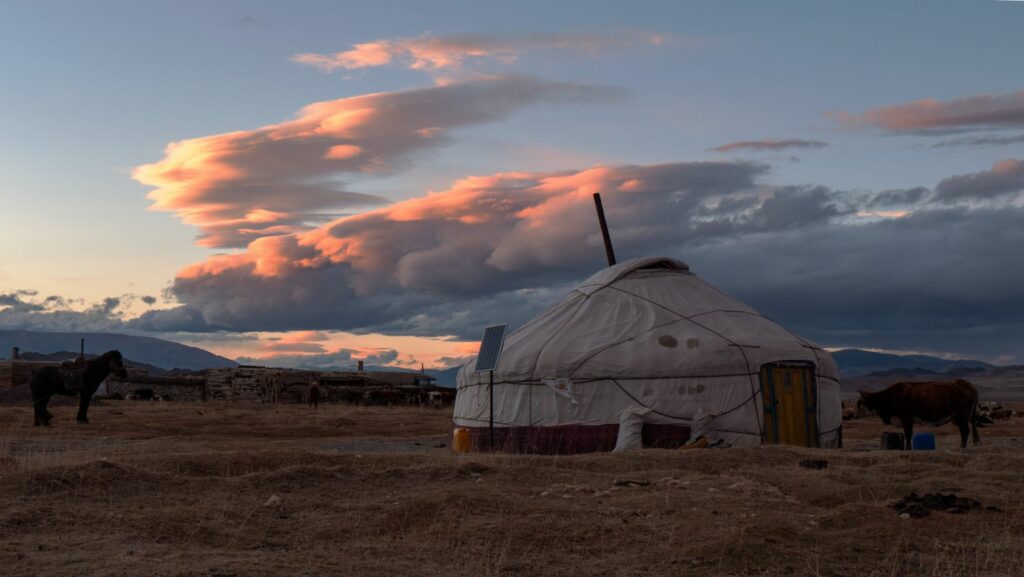
Many people choose to live in yurts for a variety of reasons. Yurts are traditionally used as winter shelters by nomadic tribes in Central Asia, but in recent years they have become popular as year-round dwellings in other parts of the world. There are several things to consider before making the decision to live in a yurt year-round. This article will provide some tips for making the transition to yurt living.
One of the most important considerations when living in a yurt is insulation. Yurts are very well insulated against the cold, but in warm weather you will need to supplement the insulation with fans or air conditioning. Another consideration is whether you will have access to running water and electricity. If you are not connected to utilities, you will need to be prepared to live off the grid. This means having a water catchment system and solar panels or a generator for power.
Yurts are typically located in rural areas, so another consideration is how far you are from grocery stores and other amenities. If you are planning to live in a yurt year-round, it is important to make sure that you are prepared for the isolation and lack of conveniences that come with living in a remote location.
Yurt living in the winter
Although yurts are most commonly thought of as the perfect summer getaway, with a little preparation they can become a comfortable and affordable year-round home. While you might have to make a few adjustments to your normal routine, winter life in a yurt can be both cozy and adventurous.

Yurt insulation
Most yurts include an insulation package in the walls to make them more energy-efficient, but you may want to consider additional insulation if you plan to live in your yurt year-round in a colder climate. You can insulate your yurt by attaching rigid foam boards to the wall panels or by blowing cellulose insulation into the wall cavities. You can also hang quilts or tapestries on the walls for added insulation. The ceiling is another area where you might want to add insulation, either by attaching more rigid foam boards or by hanging quilts or tapestries. In addition, you can seal any cracks or gaps around doors and windows with weatherstripping to help keep out drafts.
Yurt heat sources
When deciding on a yurt heating system, you must first consider what kind of fuel is available and economical in your area. Wood stoves are the most popular type of yurt heater, but they require a good supply of firewood. If wood is scarce or expensive in your area, you may want to consider a propane heater. There are several types of propane heaters designed for safe use in yurts, including vented wall heaters and unvented ceiling-mounted radiant heaters. Both types of propane heater will require the installation of a propane tank outside the yurt. Yurt living can be a great way to experience all four seasons. Spring and summer are the best times to live in a yurt. The weather is warm and there are plenty of activities to do outdoors. Here are a few tips for living in a yurt during the spring and summer.
Yurt ventilation
Warmer weather brings the opportunity to open up the yurt for ventilation. If you have lattice walls, you can unlace them and prop them open with dowels. For solid walls, you can prop open a door or window. If your yurt has a cupola, be sure to open it to promote good air circulation.
Yurt cooling
During the hot summer months, there are a few things you can do to keep your yurt cool. Opening the windows and doors will allow for a cross breeze and will help to circulate the air. You can also hang sheets or other light fabric over the windows to diffuse the sun’s rays.
If you have an electric fan, you can point it towards the door or window to help circulate the air. If you have a ceiling fan, be sure to run it in a counter clockwise direction so that it pushes the air down. And, of course, if you have an air conditioner, that will help to keep things cool as well.

Another way to keep your yurt cool is to use light-colored fabrics for your curtains and upholstery. dark colors absorb heat while light colors reflect it. So, by using lighter colors inside your yurt, you can help to keep the space cooler.
Finally, one of the best ways to keep your yurt cool is to make sure that it is well-insulated. A yurt that is properly insulated will stay cooler in the summer and warmer in the winter. So, if you haven’t done so already, be sure to insulate your yurt before the summer heat hits!
Yurt living in the fall
As the leaves start to change and the weather gets cooler, you may be wondering if it’s possible to live in a yurt year-round. The answer is yes! With a few adjustments, you can comfortably live in your yurt through the fall and winter months. In this article, we’ll give you some tips on how to do just that.
Yurt weatherproofing
As the weather gets colder, you may be wondering how you can weatherproof your yurt to make it more comfortable to live in year-round. Here are a few tips:
1. Insulate the roof: One way to keep your yurt warm in winter and cool in summer is to insulate the roof. This can be done with a variety of materials, including spray foam insulation, blown-in insulation, or even sheep’s wool.
2. Install a wood-burning stove: Another way to keep your yurt warm in the winter is to install a wood-burning stove. This will not only provide heat, but will also help to circulate the air inside the yurt.
3. Hang insulated curtains: Another way to keep your yurt warm in the winter is to hang insulated curtains over the windows and doors. This will help to create an extra layer of protection against the cold weather outside.
4. Use a space heater: If you don’t want to install a wood-burning stove, another option is to use a space heater. Space heaters are less expensive than stoves and can be used as needed to take the chill out of the air.
5. Bring in rugs and blankets: Rugs and blankets can also help to make your yurt more cozy in the winter months. Not only will they add color and pattern to the space, but they will also help to keep your feet warm!
Yurt storage
Living in a yurt has a lot of benefits, but one thing to consider is storage. Yurts are typically not as large as a traditional home, so you need to be strategic about where you put things. Here are some tips for yurt storage:
– Use the space under your bed for storage. This is a great place to put boxes or bins.
– Get creative with wall storage. Hang things on the walls or use shelves to store items.
– Use furniture with built-in storage. Ottomans and coffee tables with storage are perfect for small items.
– Keep seasonal items in storage bins. This will help you save space and only keep what you need in your yurt.

